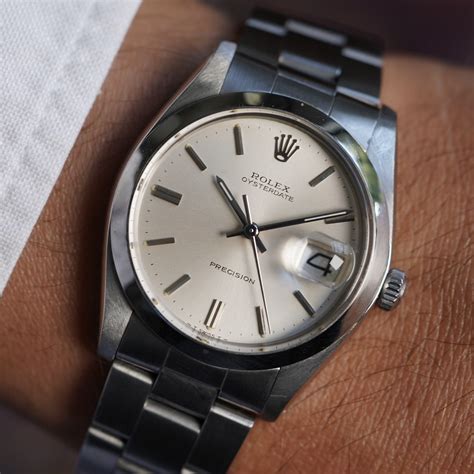rolex precision storia | rolex geneva history rolex precision storia The Oysterdate Precision reference 6694 began in the early 1960s and ran on with great success until it was finally discontinued at the end of the 1980s, earning it the distinction of being Rolex’s last manual-wind watch. as we all probably know the amount of lv 0 cheaters in comp is insane,theres one in almost every game, requiring the game to be a $15 dollar steam copy would help reduce the amount if cheaters, for $15 cheaters can get 3/4 csgo keys on third party sites which is 3/4 cheaters in mm
0 · rolex precision watches
1 · rolex precision chronometer
2 · rolex oysterdate precision
3 · rolex history history
4 · rolex geneva history
5 · rolex dial precision history
6 · rolex dial precision
7 · original rolex precision
The CSS units for small viewport start with lv* lvh. lvw. Below is the definition of large viewport from W3C. The large viewport-percentage units ( lv*) are defined with respect to the large viewport size: the viewport sized assuming any UA interfaces that are dynamically expanded and retracted to be retracted.
Rolex is not merely a watchmaker; it’s a creator of milestones, each timepiece a testament to precision, durability, and style. But how did Rolex evolve from a small workshop in London to . In this article we look at the history behind the use of “Precision” on Rolex dials as well as the two main types of watches to feature this wording. In short, Rolex used “Precision” on watches that are not certified by the Contrôle Officiel Suisse des Chronomètres (COSC).Rolex is not merely a watchmaker; it’s a creator of milestones, each timepiece a testament to precision, durability, and style. But how did Rolex evolve from a small workshop in London to one of the most famous brands in the world, synonymous with luxury and excellence?The Oysterdate Precision reference 6694 began in the early 1960s and ran on with great success until it was finally discontinued at the end of the 1980s, earning it the distinction of being Rolex’s last manual-wind watch.
Four years later, in 1914, Kew Observatory in Great Britain awarded a Rolex wristwatch a class “A” precision certificate, a distinction which until that point in time had been reserved exclusively for marine chronometers. From that date forward, .
In 1910, a Rolex became the first wristwatch to carry the Swiss Certificate of Chronometric Precision, bestowed by the Official Watch Rating Centre in Bienne, Switzerland. The Rolex Explorer, like all Oyster Perpetual timepieces in Rolex’s Professional collection, is an expression of two technical milestones that Rolex and its visionary founder Hans Wisdorf contributed to watchmaking history.Hans Wilsdorf foresaw that the wristwatch was destined to become an everyday object – for men as well as for women – provided that he could prove it to be a precise, waterproof, robust and reliable instrument. His stroke of genius was to anticipate this evolution, which is .
For us, precision is not just a matter of watchmaking mechanics. It equally involves human “mechanics”. Beyond what it takes to design, manufacture and arrange every single part that constitutes our watches, our superlative precision is the result of .
A Rolex watch was the first wristwatch in the world to receive the Swiss Certificate of Chronometric Precision, granted by the Official Watch Rating Centre in Bienne.In 1931, Rolex invented the first wristwatch self-winding system with a free rotor, named the Perpetual rotor, the precursor of contemporary self-winding systems. This innovation consists of a weight oscillating freely in both directions on a central axle. In this article we look at the history behind the use of “Precision” on Rolex dials as well as the two main types of watches to feature this wording. In short, Rolex used “Precision” on watches that are not certified by the Contrôle Officiel Suisse des Chronomètres (COSC).Rolex is not merely a watchmaker; it’s a creator of milestones, each timepiece a testament to precision, durability, and style. But how did Rolex evolve from a small workshop in London to one of the most famous brands in the world, synonymous with luxury and excellence?
The Oysterdate Precision reference 6694 began in the early 1960s and ran on with great success until it was finally discontinued at the end of the 1980s, earning it the distinction of being Rolex’s last manual-wind watch.Four years later, in 1914, Kew Observatory in Great Britain awarded a Rolex wristwatch a class “A” precision certificate, a distinction which until that point in time had been reserved exclusively for marine chronometers. From that date forward, . In 1910, a Rolex became the first wristwatch to carry the Swiss Certificate of Chronometric Precision, bestowed by the Official Watch Rating Centre in Bienne, Switzerland. The Rolex Explorer, like all Oyster Perpetual timepieces in Rolex’s Professional collection, is an expression of two technical milestones that Rolex and its visionary founder Hans Wisdorf contributed to watchmaking history.
Hans Wilsdorf foresaw that the wristwatch was destined to become an everyday object – for men as well as for women – provided that he could prove it to be a precise, waterproof, robust and reliable instrument. His stroke of genius was to anticipate this evolution, which is .
rolex precision watches
rolex precision chronometer


For us, precision is not just a matter of watchmaking mechanics. It equally involves human “mechanics”. Beyond what it takes to design, manufacture and arrange every single part that constitutes our watches, our superlative precision is the result of .
A Rolex watch was the first wristwatch in the world to receive the Swiss Certificate of Chronometric Precision, granted by the Official Watch Rating Centre in Bienne.

rolex oysterdate precision
rolex history history
Check out our louis vuitton vans selection for the very best in unique or custom, handmade pieces from our sneakers & athletic shoes shops.
rolex precision storia|rolex geneva history



























